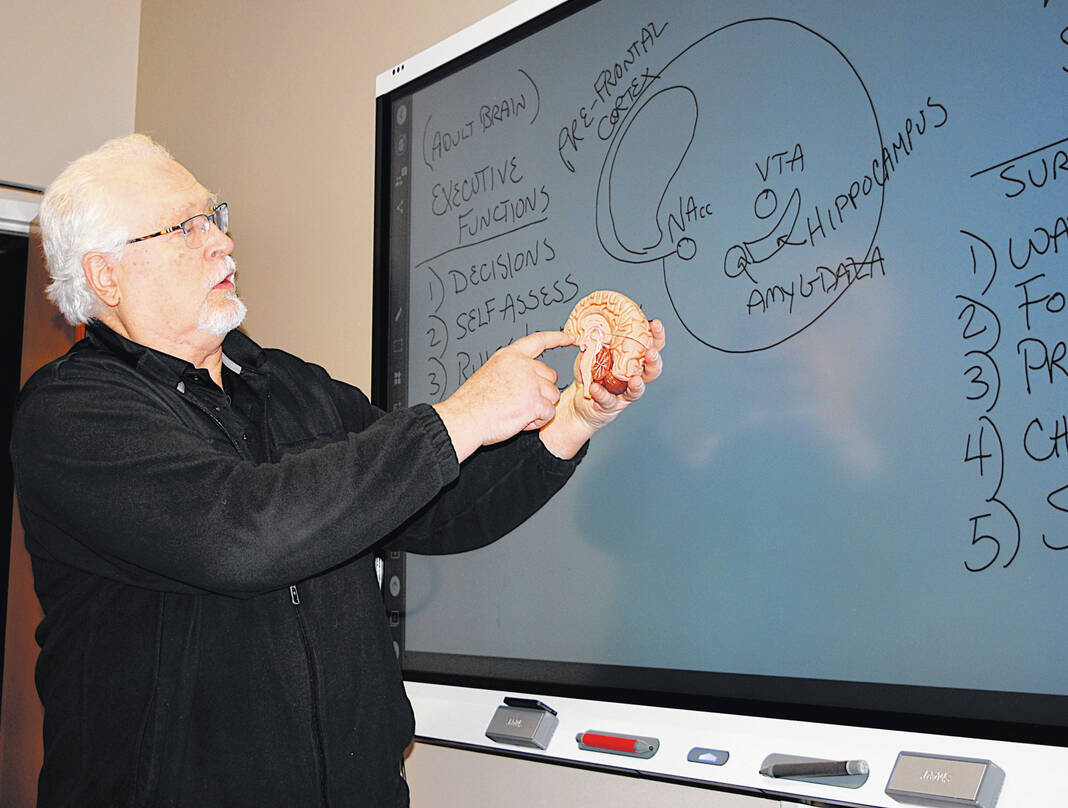
Jack Stem spoke Wednesday at the Highland County Drug Abuse Prevention Coalition.
John Hackley | The Times-Gazette
Jack Stem spoke at a meeting of the Highland County Drug Abuse Prevention Coalition Wednesday about the medical model of what happens in the human brain during addiction and overcoming the stigma associated with addiction.
Stem is the program manager for grants at the University of Cincinnati College of Nursing. He is also a chemical dependency counselor. He was a nurse anesthetist for 14 years before losing the position in 1995 because of an opioid addiction.
“One of the things in my own recovery that I know made a huge difference for me in how I felt about myself and how I dealt with the stigma was learning biology,” said Stem.
Stem compared substance addiction to type 2 diabetes because both diseases are genetically based and triggered by lifestyle choices. “If we would treat type 2 diabetes the way we treat those with addictions, we wouldn’t treat them,” said Stem. “As time went on, I started to realize nobody says to the endocrinologist who treats diabetes who becomes diabetic, how could you let this happen with everything you know about diabetes?”
According to the National Institutes of Health, more than 46 million Americans age 12 and older had at least one substance-use disorder, and only 6.3 percent received treatment. “Can you imagine breast cancer having a treatment rate of 6.3 percent,” said Stem. “Nobody would stand for that.”
Stem spoke about the functions of the limbic system and the prefrontal cortex in the human brain and how they are involved in addiction. He explained that the limbic system is fully functional in humans at birth, and the prefrontal cortex does not reach full maturity until nearly the age of 30.
He said the limbic system is involved in emotions, memories and survival and uses a positive feedback mechanism that releases pleasure-inducing dopamine into the brain during activities like eating that are necessary for survival. He said the prefrontal cortex is responsible for impulse control.
“As we look at a brain that is an adult brain and has developed the disease of addiction, what we see is high activity here [the limbic system] and low activity here [the prefrontal cortex],” said Stem.
He said that drug use dominates the survival instincts of an addict’s brain. “As the disease progresses, drug use becomes an instinct for survival, which means at some point, it’s going to become more important than sex, more important than kids, more important than work, and more important than food,” said Stem. “It will become our number one survival skill.”
Stem said most substance abusers have a history of trauma, and that opioids are even more effective at removing or relieving spiritual and psychological pain than they are at relieving physical pain.
“I think the more people understand why this is a disease — it’s not just something we are saying; there is scientific proof because we can actually watch the human brain react — I think it starts to change attitudes,” said Stem.
Reach John Hackley at 937-402-2571.

